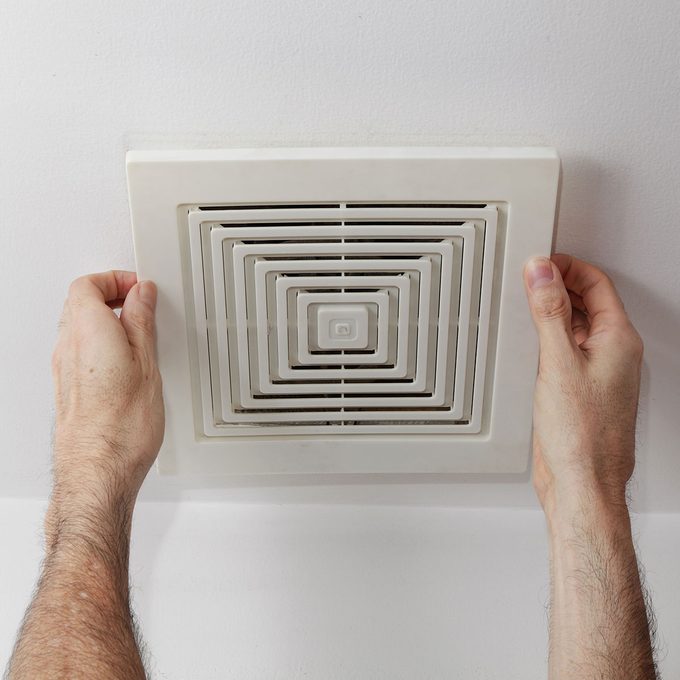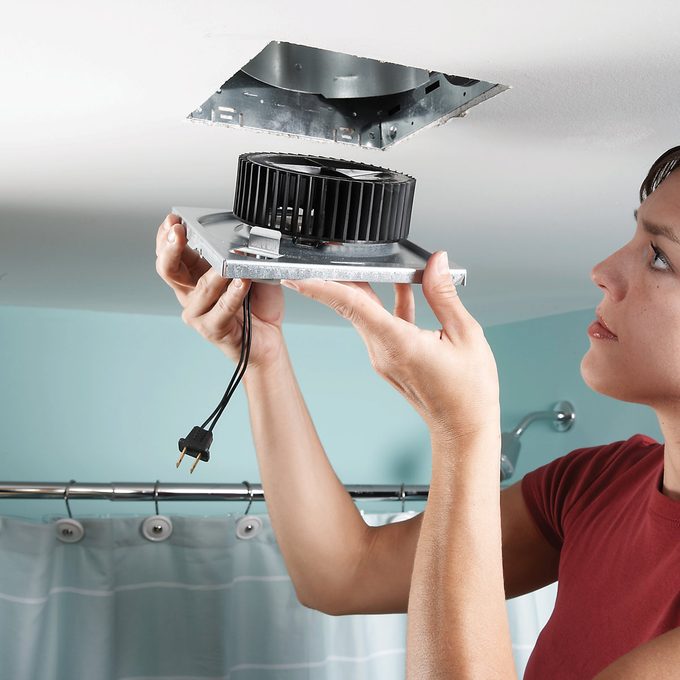Bathroom Exhaust Fan Not Pulling Air
A bath fan that isn't installed properly can cause more damage than no fan at all. But here's the good news: Bath fans aren't that complicated.
 Sadeugra/Getty Images
Sadeugra/Getty Images
Common Bath Fan Problems and Solutions
The humble bath fan does more than prevent a foggy mirror after a hot shower — it pulls moisture out of your house. Without it, excess humidity can cause mold growth and peeling paint, or bigger problems like rotten window frames, damaged drywall and wood decay inside walls. Repair costs can easily reach thousands of dollars.
On the other hand, a fan that wasn't installed properly can actually cause more damage than no fan at all. But here's the good news: Bath fans aren't complicated. If you understand a few basics, you can recognize and correct almost any problem.
Problem: The Fan Is Running But Not Working
If your fan appears to run just fine but doesn't seem to expel air and moisture, light an incense stick and hold it near the fan. The smoke should flow quickly into the fan. Alternatively, place a tissue over the fan grille — the fan's suction should hold it in place. If your fan fails either of these tests, here are some likely causes:
Solutions for Running Fan Issues:
The Grill Is Dirty
Bath fans draw in dust and lint, which can eventually clog the grille and limit airflow. Vacuuming the grille is a good start. But for a really good cleaning, remove the grille, soak it in soapy water and scrub it with a brush.
The Dampers Are Stuck
There are two dampers for a bath fan, one at the housing and another where the duct exits the building. If they don't open easily or open only partly, airflow will be weak.
Try moving the exterior damper by hand to make sure it opens easily. Clean away any debris that might hinder movement. Interior dampers rarely stick, but if you suspect trouble, remove the grille and push open the damper with a stiff wire.
The Bathroom Is Too Airtight
A fan can only drive air out of the bathroom if replacement air can get into the bathroom. Without adequate replacement air, the fan may not be able to warm up the duct and completely evacuate the moisture.
The easiest way to let in replacement air is to leave the door cracked open while the fan is running. Another solution is to trim the bottom of the door so that there's at least a 1/2-in. gap between the door and the floor.
 Family Handyman
Family Handyman
Problem: Drips and Water Stains
If water drips from the fan grill, you have a condensation problem. If you see water stains on the ceiling (even several feet from the fan), that could also be condensation.
Here's what's going on: On a chilly day, the exhaust duct in your attic is cold. When you flip on the fan and send steamy air through the duct, moisture gathers inside the duct. Normally, this condensation process quickly stops, and the moisture evaporates as warm air heats the duct.
If that doesn't happen, water continues to form and will eventually trickle back to the fan housing and drip down through the grill or drip out through tiny openings in the duct. Most often this will occur when the duct is run through the attic, but it can also happen when a duct is inside a wall or floor.
Solutions for Water Drip Problems:
The Outside Damper Is Stuck
If the damper won't open, the fan may drive enough air through the duct to cause condensation, but not enough to warm the duct and dry it out. There's a damper on the fan housing too, but the outside damper is much more likely to stick.
Find the vent hood on your roof or exterior wall. Make sure the damper isn't obstructed or stuck. Usually, just moving it with your finger is enough to free it.
Missing Insulation
Ducts need to be fully encased in insulation. Without it, the duct never warms up and condensation continues as long as the fan is running. Grab a flashlight and pop your head into the attic. If your duct is uninsulated or the insulation has fallen off, add some or reattach the loose parts. Use aluminum tape to fasten the insulation to the fan housing and the vent hood.
Fan Is Vented Into the Attic
Terminating the duct in the attic is surprisingly common — and harmful. Moist air will condense on framing and sheathing, forming ice or water that will support rot and mold or damage the rooms below. Consider this a wake-up call and extend the duct to vent the air outside before major damage occurs!
Duct in Vented Soffit
It's OK to run a duct outside through a soffit — unless the soffit contains inlets for roof venting. In that case, moist air coming out can re-enter the attic through soffit vents; the effect is similar to venting directly into the attic. If you have vented soffits, you'll have to run the duct outside through the roof.
ⓘ
Other Potential Problems
Ice Dams
If your fan duct has loose insulation or it vents into the attic, the warm air may create a warm spot, risking an ice dam. The warm spots on the roof melt snow, and the meltwater flows down to colder areas, freezes and forms a dam. Be sure to check the vent in the attic to make sure the insulation is tight to the duct and isn't sagging down from the roof vent.
Noisy Fan
If your bath fan seems louder than it used to be, it's not just your imagination. Over the years, fans become noisy as the motor parts wear out. This is especially common with cheaper models.
Some fan models allow you to replace just the motor. But if that's not an option, choose a fan that fits into the existing ceiling opening — then you won't have to cut into the bathroom ceiling!
Cold Air Is Coming In
It's possible for the damper on the duct hood to become stuck open. This allows cold air to come back in, and in some cases the strength of the fan is not enough to counteract the reverse airflow. This is most apparent in the winter months.
Check the exterior vent to make sure it's free of debris. Be sure the damper can move freely even if there are no visible obstructions.
What to Consider When Shopping For a New Bath Fan
If you're fed up with your current fan and are considering getting a new one, here are three things you should consider while shopping.
Size the Fan for the Room
-
- Fan capacity is rated in cubic feet per minute, or CFM. This indicates the volume of air the fan is able to move.
- The higher the number, the more air that is evacuated. Most bath fans are rated from 50 to 110 CFM.
- You should choose a fan with a CFM rating that roughly equals the square footage of your bathroom, but these ratings are only part of the story.
- Long runs of flexible duct in your attic will work against the efficiency of the fan.
- PRO TIP: When in doubt, opt for a higher CFM rating.
Check the Sone Rating
-
- "Sone" is the term used in the industry to describe how loud a bath fan is. The lower the number, the quieter the fan will be.
- One sone is roughly equal to the noise your refrigerator makes. Most fans are between .75 and 1.5 sones, but there are some as low as .3 or as high as 6!
- PRO TIP: Experts generally recommend fans with ratings of 1.5 or less.
Don't Buy a Cheap Fan
-
- Most home centers have basic bath fans for about $20, but they're loud and have low CFM ratings. It's smart to spend at least twice that; you'll get a fan that's quieter, pushes more air and is likely to last longer.
- Higher cost will usually get you more features, such as LED lights, humidity sensors and quieter operation.
- PRO TIP: You can even find high-end fans that cost only about $200.
Bathroom Exhaust Fan Not Pulling Air
Source: https://www.familyhandyman.com/article/common-bath-fan-problems/


0 Comments